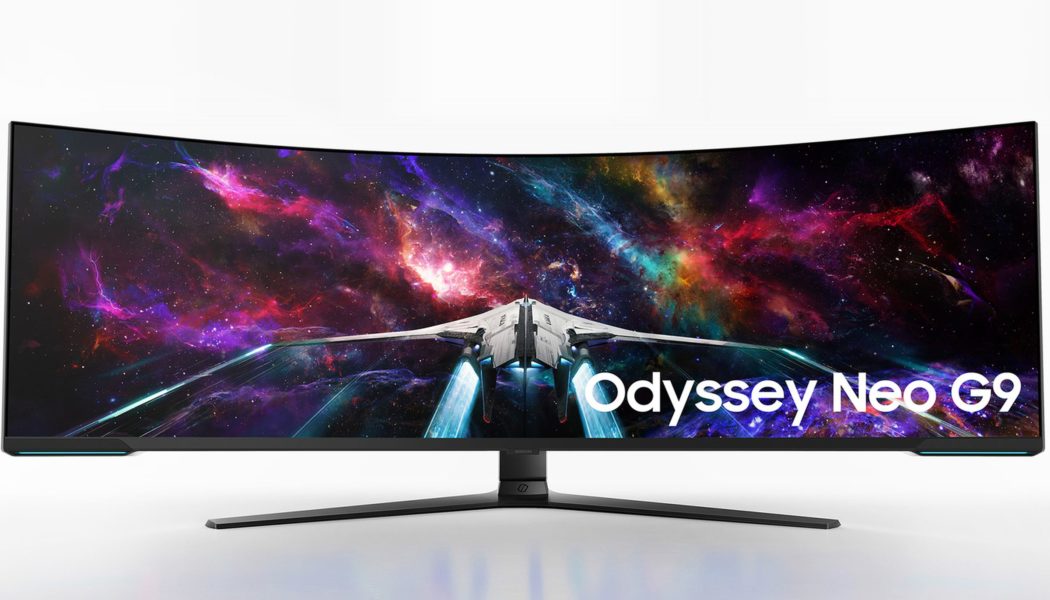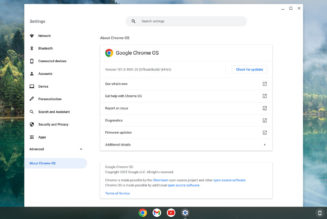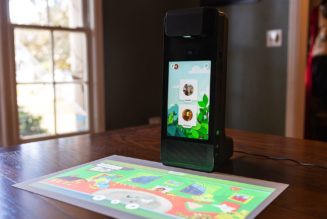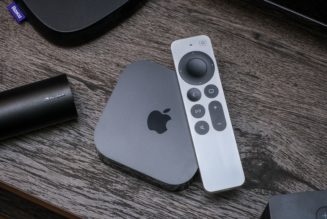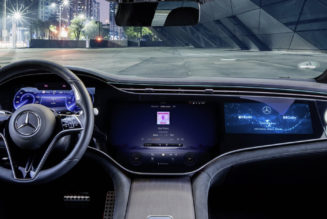The company has dared to ask what if you made the Ark but wide and added ‘8K.’
:format(webp)/cdn.vox-cdn.com/uploads/chorus_asset/file/24326000/1_5.jpg)
Remember the Samsung Odyssey Ark? Of course you do — it was released last year, had a monstrous 55-inch display that towers over you in portrait mode, and used Mini LED tech. In his review, my colleague Cameron Faulkner said that using it “feels like being in VR,” and called its presence “magnetic.” In short, it’s a monitor dialed (literally) so far past 11 that its Multi View mode was barely able to keep up.
So of course Samsung went and made something even bigger, with even higher-end specs, and is announcing it at CES. Enter the new Odyssey Neo G9 (ignore the fact that new and neo mean the same thing), a follow-up to Samsung’s $2,499 49-inch Mini LED display of the same name, released in 2021. This time, it has a 57-inch “super ultra-wide curved display.”
:format(webp)/cdn.vox-cdn.com/uploads/chorus_asset/file/24326006/1_6.jpg)
When AMD teased this monitor at its RDNA 3 event, the company said it was the “first 8K ultrawide.” As my colleague Sean Hollister pointed out then, the “8K” label is misleading. It probably makes you think of 8K TVs, with a resolution of 7680 by 4320, which have four times as many pixels as 4K (just as 4K quadrupled 1080p’s resolution). Samsung’s now announced, however, that the new Odyssey Neo G9 has a resolution of 7680 by 2160, making for a 32:9 aspect ratio. That’s the same horizontal resolution as the 8K UHDTV standard, but paired with the horizontal resolution of a 4K display.
To be clear, that is still a lot of pixels — double the number of a traditional 4K display, like the one on the Ark. To handle it all, Samsung says this is the first gaming monitor with DisplayPort 2.1, though the company hasn’t revealed what other inputs it’ll have, or if it’ll use a One Connect Box like the Ark.
There’s actually still a lot of details we don’t know about the neo Neo G9. Samsung says it’ll launch later this year but doesn’t offer any further specifics, and there’s no word yet on price. And while we know about some of its features — a 240Hz refresh rate and a matte screen coating — the company isn’t mentioning whether it’ll have Multi View mode to accept multiple inputs, or even what ports the monitor will have besides DP 2.1. Also, a note on that refresh rate: it’s higher than the Ark’s, which topped out at 165Hz, but when Sean tested the original Neo G9 its 240Hz display mode had some very odd behavior, as did the G9 before it.
